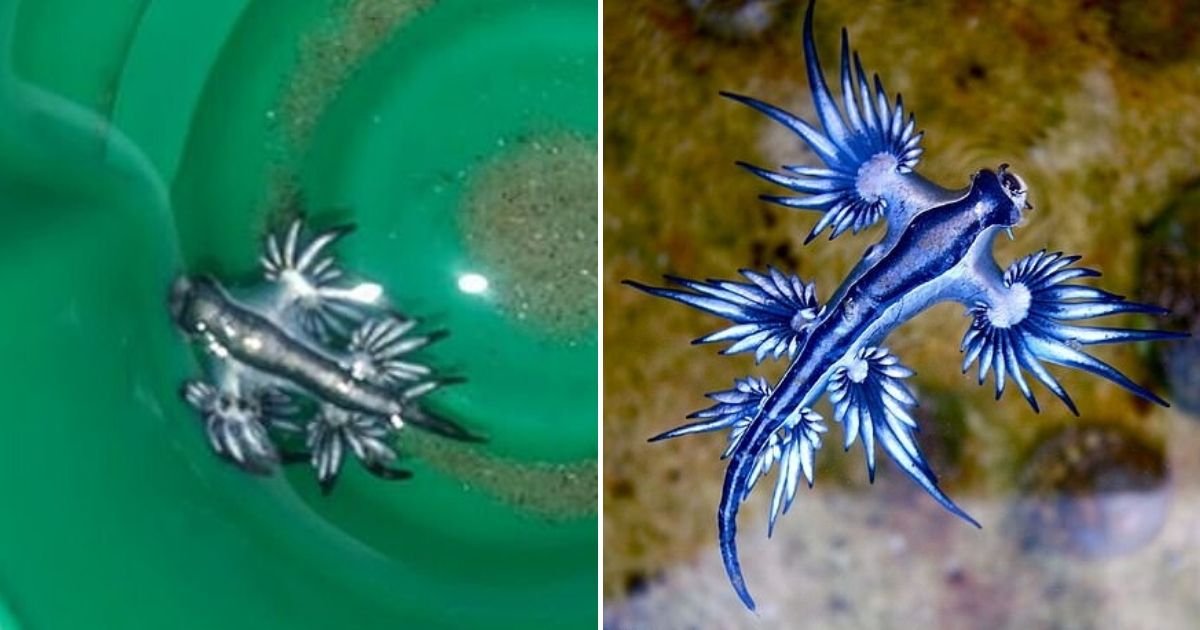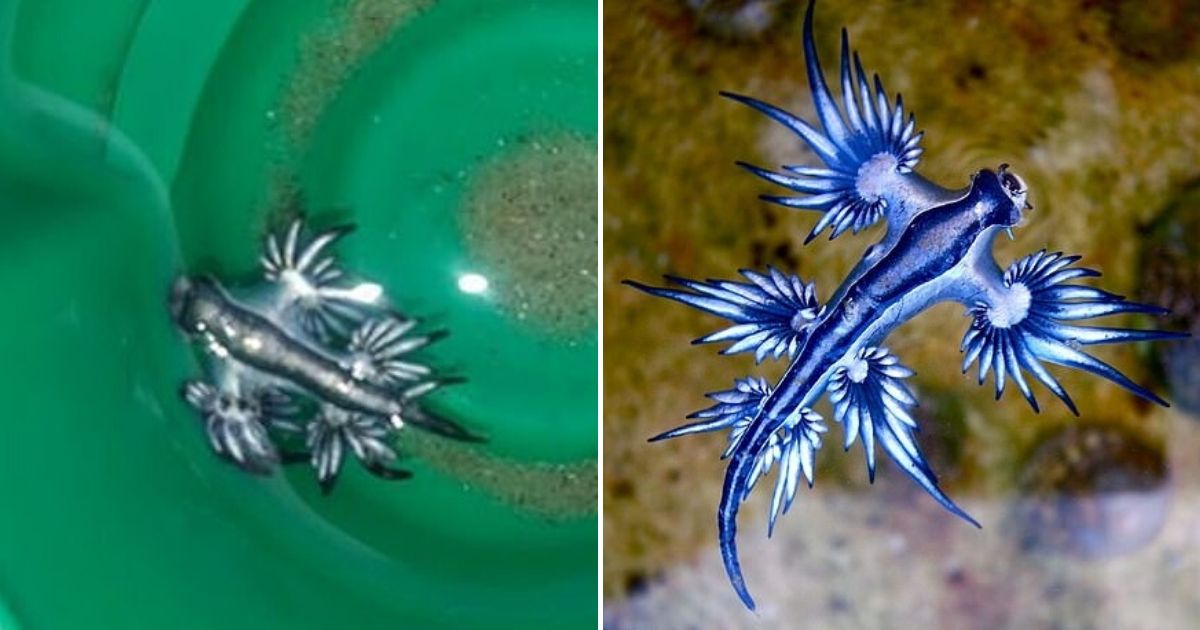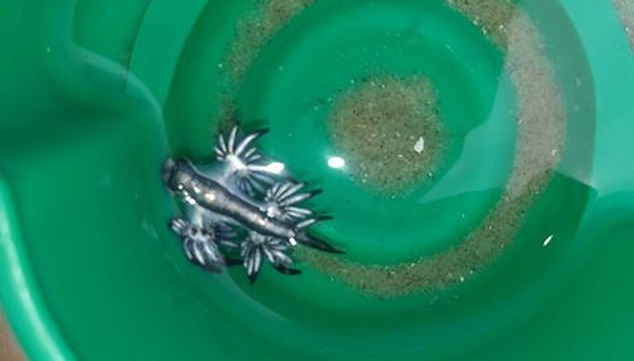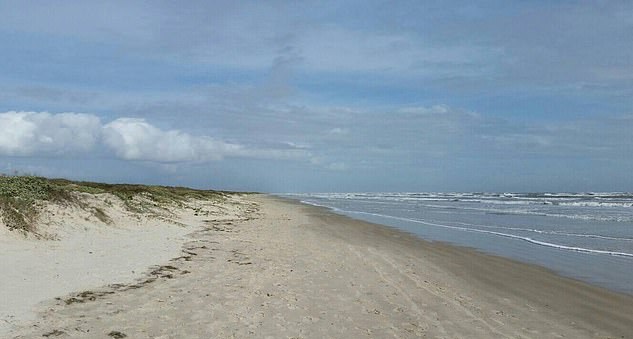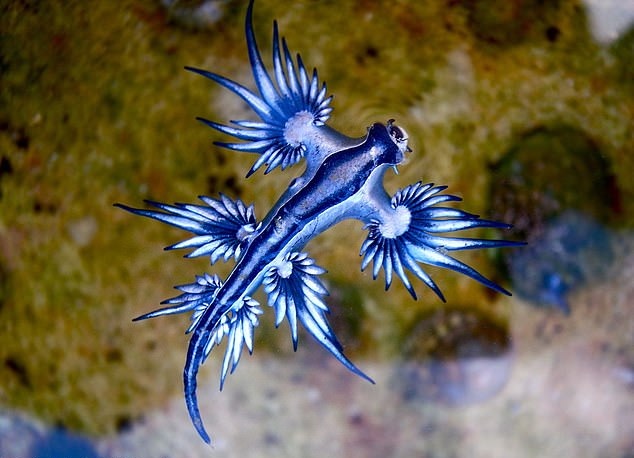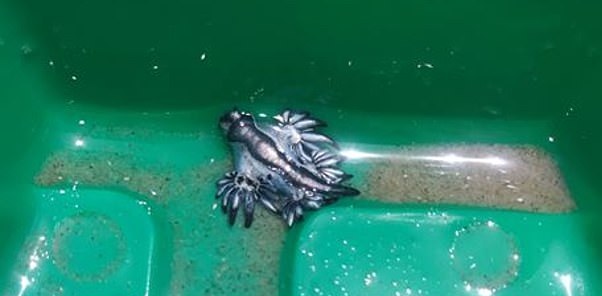Dangerous blue dragons, also known as blue angels, dragon slugs, blue sea slugs, and blue dragon slugs, have invaded the sea surrounding Texas and have been spotted washed up on the shore.
Going under the scientific name of Glaucus atlanticus, the blue dragons are small blue mollusks that float on the water surface.
While the animals themselves aren’t venomous, they store and concentrate venom in their bodies after feeding on their prey, the giant Portuguese man o’ war, a relative of jellyfish.
The blue dragons’ presence in Texas was first spotted and reported by 7-year-old Hunter Lane who was at Padre Island National Seashore when he came across the stunning creature.
As the boy’s father, Trey Lane, revealed in an interview with CNN, his family had never before spotted a blue dragon in the area despite vacationing there for three decades.
According to Trey, his son “proclaimed to me that he had discovered a new species” after finding the blue dragon on the shore.
After the unusual finding, the Padre Island National Seashore officials warned people to stay away from blue dragons because “their sting can be more painful than a man-of-war’s.”
“A blue dragon, a type of nudibranch or sea slug, was found in the park this weekend. Blue dragons are very small, generally only 3 cm, but don’t let their size fool you, they have a defense worthy of the name dragon,” PINS announced in their Facebook post.
“Blue dragons are a predator of the Portuguese man-of-war. After eating, they move the stinging cells from the man-of-war to the end of their ‘fingers.’ Because they are able to concentrate the stinging cells together, their sting can be more painful than a man-of-war’s!”
As the officials went on to warn, people should keep their distance if they come across the rare find.
What are your thoughts on this story? Let us know in the comments and don’t forget to SHARE this post with your family and friends and follow us on Facebook for more news and stories!
Replaced!


